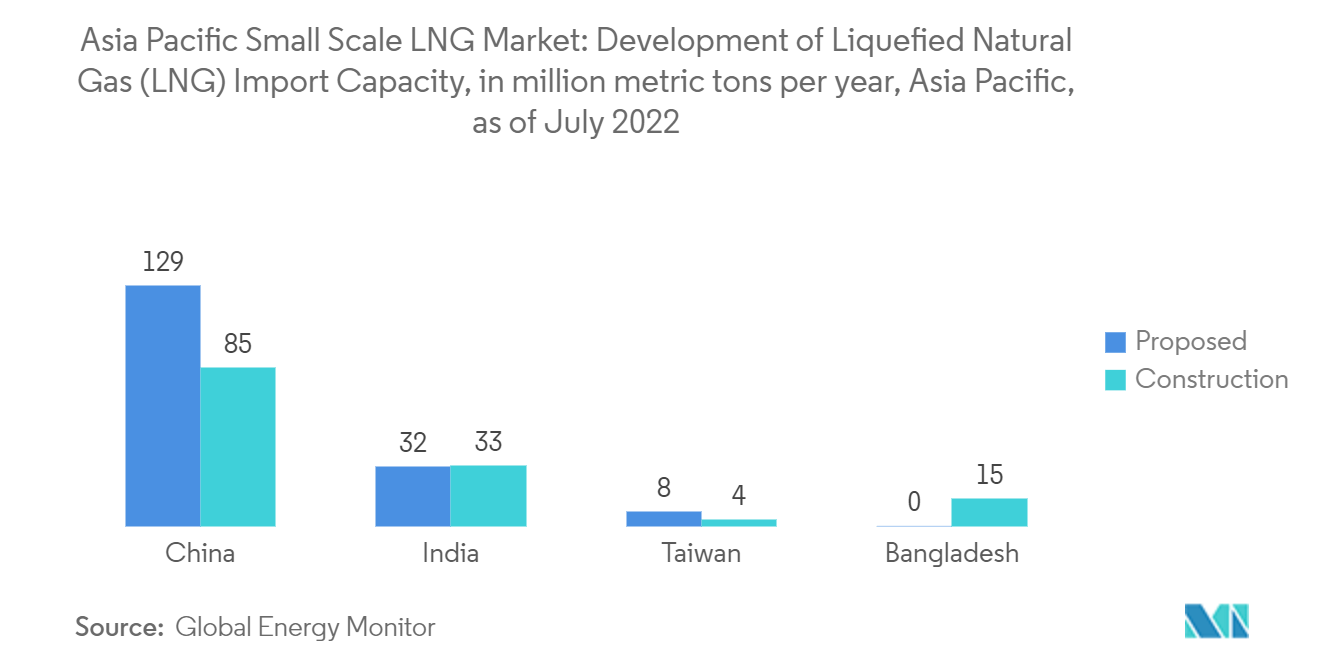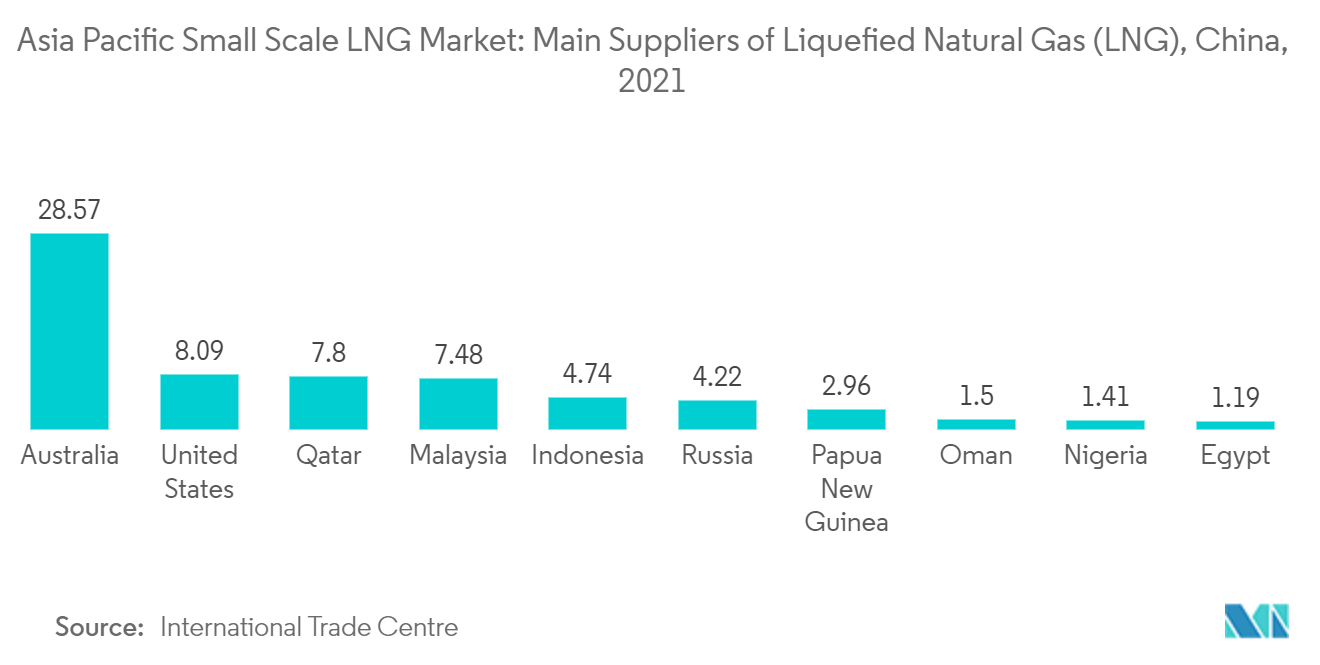Market Trends of Asia-Pacific Small-scale LNG Industry
This section covers the major market trends shaping the APAC Small-scale LNG Market according to our research experts:
Liquefaction Terminals to Dominate the Market
- Small-scale liquefaction terminals are developed to serve specific markets having a production capacity of fewer than 0.5 million tons per year. In contrast, a large-scale liquefaction terminal has a production capacity of 16 million tons annually. These terminals supply the end users where traditional infrastructure is unavailable, or consumers require liquid fuel.
- Gas pipelines feed small-scale liquefaction plants, and the costs of these small liquefaction plants are very diverse and vary according to technology and modularity. According to the Union for the Mediterranean (UfM), gas platform investment in small-scale liquefaction terminals is estimated to range between 350 USD/ton and 1,250 USD/ton.
- As of July 2022, China is increasing its LNG import capacity. China is expected to add over 200 million metric tons in annual import capacity within the next few years, of which 85.3 million tons are already in construction. This is far more than the project pipeline of other Asian countries such as Vietnam and Thailand.
- However, in 2021, the LNG prices increased with the easing of COVID-19-induced restrictions that led to the global restoration of industrial operations. Higher coal prices in Asia have led to increased LNG imports for power generation and increased LNG prices.
- Furthermore, to increase the distributed LNG production business, in June 2022, GAIL placed an order for two small-scale liquefaction skids capable of producing LNG on a pilot basis. These plants will help to distribute natural gas through liquefaction in the new City Gas Distribution (CGD) network, and the liquefaction of gas at isolated fields will support setting up LNG fueling stations and bunkering. The project is forecast to provide a thrust to the Government of India's initiatives to increase the share of natural gas in the primary energy basket.
- Thus, the increasing demand for small-scale LNG from the various sectors, mainly in the Asia-Pacific region, is likely to increase the number of liquefaction terminals during the forecast period.

China to Dominate the Market
- As of 2021, China is one of the world's richest countries, which led to the growth in LNG demand. The LNG import was around 12 million tons in 2020, which will increase to 79 million tons in 2021. Due to this surge in demand, China became the world's largest LNG importer, surpassing Japan. The increased demand is due to Chinese LNG buyers signing long-term contracts for more than 20 million tons a year.
- In 2021, Australia will be the leading supplier of LNG to China. In 2021, China purchased some 28.57 million metric tons of liquefied natural gas from Australian producers, which accounted for more than one-third of the total LNG import volume in China.
- In China, most small-scale liquefaction plants are major gas and coal-producing areas located domestically in the Northwestern and Central provinces. However, two regasification terminals exist in Hainan and Fangchenggang with a capacity of 0.6 million tons per year (MTPA) each, which are considered small-scale LNG terminals.
- Further, the demand for LNG is expected to increase from marine vessels in China. With IMO 2020 coming into effect in January 2020, the Chinese government planned to develop nearly 40 terminals with LNG supply in 2020; however, due to COVID-19, the demand for LNG decreased, and thus, the projects were delayed. A few came online in 2021, and a few in 2022.
- In December 2021, Pavilion Energy, a Singapore-based energy solutions provider, and Zhejiang Hangjiaxin Clean Energy entered a deal to supply small-scale LNG under which the former company is expected to provide 0.5 million tons per year of LNG to Hangjiaxin from 2023.
- In January 2022, Avenir LNG sold one of its small-scale LNG bunker vessels to Shanghai SIPG Energy Service, a joint venture between Shanghai International Port Group and Synergy. It is the world's largest LNG bunker vessel, with a capacity of 20,000 cubic meters. The LNG bunker vessel would be operational at Shanghai port, the world's largest container port.
- Therefore, owing to the above points, China is expected to dominate the growth of the small-scale LNG market during the forecast period.

